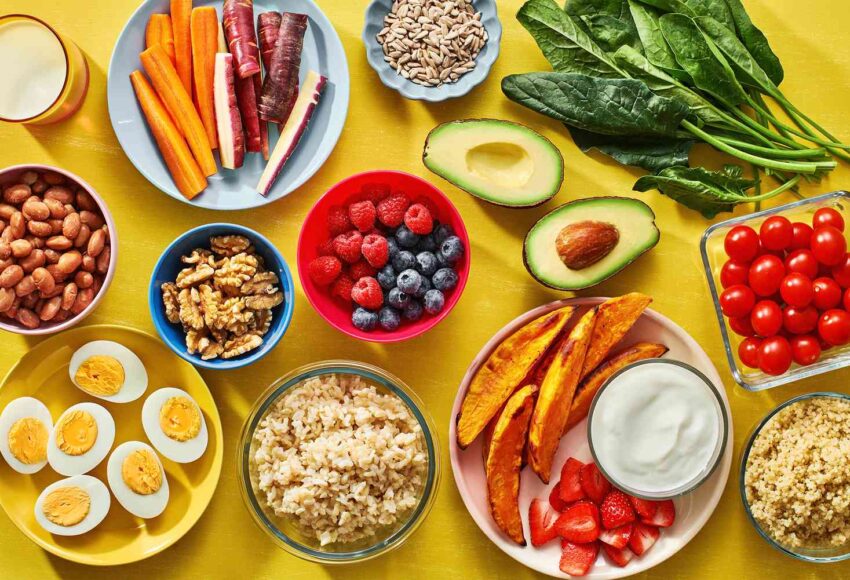
- 18/06/2024
- Goodfaith Healthcare
- 0 Comments
- Blogs
Pediatric Nutrition: What Should Be on Your Child’s Plate?
As a parent, you want the best for your child, especially when it comes to their nutrition. A balanced, nutrient-rich diet is essential for your child’s growth, development, and general well-being. With an abundance of information and constantly shifting dietary guidelines, it can be difficult to know exactly what your child should be eating.
For personalized advice, consult child specialist Dr. Anuja Pakhare, the best Pediatrician in Hinjewadi, at Goodfaith Healthcare.
The Building Blocks of Pediatric Nutrition
Macronutrients: The Essentials
- Proteins: Proteins are crucial for the growth and repair of tissues, especially during childhood. Sources include lean meats, poultry, fish, eggs, dairy products, beans, lentils, and nuts.
- Carbohydrates: Carbohydrates are the primary source of energy for children. Opt for complex carbohydrates such as whole grains, fruits, vegetables, and legumes over simple sugars found in candies, sodas, and baked goods.
- Fats: Healthy fats are vital for brain development, energy, and the absorption of vitamins. Include unsaturated fat-rich foods in your child’s diet, such as avocados, nuts, seeds, olive oil, and fatty seafood. Reduce the intake of processed and fried foods that contain saturated and trans fats.
Micronutrients: The Unsung Heroes
- Vitamins: Vitamins play diverse roles in maintaining health. For example, vitamin D is critical for bone health, while vitamin C boosts the immune system. A varied diet rich in fruits, vegetables, dairy, and lean proteins typically provides sufficient vitamins.
- Minerals: Minerals such as calcium, iron, and zinc are crucial for various bodily functions. Ensure your child’s diet includes dairy products, leafy greens, meat, and fortified cereals.
Age-Appropriate Nutritional Guidelines
- Infants (0-1 Year)
Breast milk or formula is the main source of nutrition for babies, providing vital nutrients and antibodies. When introducing solid foods to a six-month-old baby, focus on iron-enriched cereals, pureed fruits and vegetables, and protein. - Toddlers (1-3 Years)
Toddlers require a balanced diet to support their rapid growth and high energy levels. Include a variety of foods from all food groups:
• Fruits and Vegetables: Aim for colorful choices.
• Grains: Offer whole grains like oatmeal and whole-wheat bread.
• Protein: Serve small portions of lean meats, beans, and eggs.
• Dairy: Ensure adequate intake of milk, cheese, and yogurt. - Preschoolers (3-5 Years)
Preschoolers are developing their taste preferences and eating habits. Encourage healthy choices by:
• Modeling good eating habits: Eat meals together.
• Creating fun and balanced meals: Use creative plating.
• Limiting sugary snacks: Offer fruits, nuts, and whole-grain snacks. - School-Aged Children (6-12 Years)
School-aged children need balanced meals to support their activities. Focus on:
• Balanced breakfasts: Provide a combination of protein, whole grains, and fruits.
• Healthy lunches and snacks: Pack nutritious lunches and snacks.
• Family meals: Prioritize family meals for nutrition education. - Adolescents (13-18 Years)
Adolescents undergo significant changes, increasing their nutritional needs. Promote:
• Nutritious meals: Ensure they consume adequate amounts of all food groups.
• Hydration: Encourage water intake over sugary drinks.
• Healthy choices: Teach them to make nutritious choices even when eating out. - Special Considerations
Allergies and Intolerances Food allergies and intolerances are common in children. If your child has a diagnosed allergy or intolerance, work with a healthcare provider like Dr. Anuja Pakhare to ensure they receive the necessary nutrients through alternative sources. Vegetarian and Vegan Diets Vegetarian and vegan diets can be healthy for children if well-planned. Ensure they receive adequate protein, iron, calcium, vitamin B12, and omega-3 fatty acids through plant-based sources and fortified foods.
Practical Tips for Parents
- Plan Balanced Meals: Utilize the plate approach as a visual aid: fruits and vegetables should make up half of the plate, whole grains should make up a quarter, and lean proteins should make up the remaining quarter.
- Limit Processed Foods: Whenever possible, choose whole, minimally processed foods.
- Encourage Hydration: Water should be the primary drink for children. Limit sugary drinks and sodas.
- Educate About Nutrition: Teach your children about the importance of nutrition and how different foods benefit their bodies.
- Be a Role Model: Make wholesome food choices for yourself to demonstrate to them the value of eating well.
- Make Mealtime Positive: Create a positive mealtime environment where healthy foods are enjoyed and appreciated.
Conclusion
For your child’s development and long-term health, it is imperative that they obtain the right diet. By understanding the fundamental elements of a well-rounded diet and applying practical strategies, you can initiate your child’s journey towards wholesome eating practices.
Visit the Goodfaith Healthcare Pediatric Clinic in Hinjewadi for individualized Nutrition & Diet Counseling. Families can benefit from our knowledgeable Child Specialist in Hinjewadi, Dr. Anuja Pakhare, who provides guidance on healthy dietary practices. Schedule an appointment with Goodfaith Healthcare to ensure your child is on the right path towards a wholesome and nourished life.
